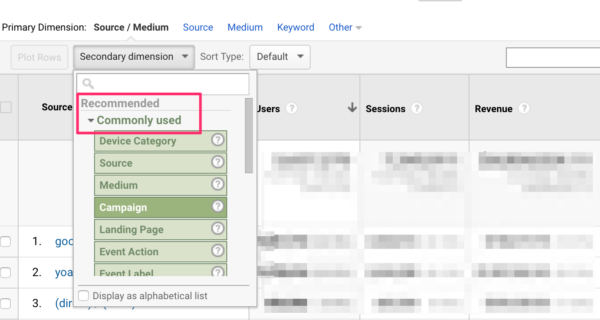A Comprehensive Overview to 'Secondary Dimensions' in Google Analytics: Insights Revealed
A Comprehensive Overview to 'Secondary Dimensions' in Google Analytics: Insights Revealed
Blog Article
Navigating the Depths of Secondary Dimension in Google Analytics: An In-depth Expedition on Its Functionality
Secondary dimensions, though apparently straightforward at very first glance, harbor a riches of untapped possible waiting to be utilized. As we embark on this trip to check out the nuanced capability of additional measurements, we will certainly uncover just how this function can brighten patterns, reveal connections, and eventually lead the method for educated decision-making in the electronic landscape (what is a “secondary dimension” in google analytics?).
Understanding Secondary Measurements in Google Analytics

Understanding exactly how secondary dimensions job is critical for leveraging the full power of Google Analytics. By integrating main metrics with secondary measurements, you can get useful understandings that drive notified decision-making and optimization approaches.
Leveraging Secondary Measurements for Data Evaluation
Building upon the foundational understanding of just how secondary dimensions improve information evaluation in Google Analytics, the utilization of these additional layers of details comes to be paramount in drawing out important insights for informed decision-making and optimization strategies. By leveraging additional measurements, analysts can dive deeper into the efficiency metrics by adding even more context to the key dimensions, thus revealing concealed patterns and connections that could not appear in the beginning look. This much deeper degree of analysis makes it possible for businesses to much better recognize customer actions, determine fads, and determine locations for renovation.
In addition, additional measurements give a more comprehensive sight of the data, permitting division based upon numerous specifications such as demographics, tools, website traffic resources, and extra. This division assists in a more granular evaluation, enabling businesses to tailor their approaches and campaigns to particular target market segments for improved targeting and customization. In significance, the critical use secondary measurements empowers organizations to make data-driven decisions that drive growth and success in the digital landscape.
Advanced Methods for Additional Dimension Implementation
Discovering elaborate methods to harness the complete possibility of second measurements in Google Analytics raises the depth and sophistication of data analysis for critical decision-making. One advanced method for implementing additional dimensions is the usage of custom dimensions. Furthermore, incorporating secondary dimensions with advanced segments can provide even extra granular understandings by using multiple layers of division to the information.
Interpreting Insights Through Secondary Measurements

When translating understandings via additional dimensions, it is important to take into consideration the context of the data and just how various measurements connect with each other. Understanding which specific traffic sources lead to greater conversion rates or determining which devices users favor for making acquisitions can give workable understandings for maximizing advertising and marketing campaigns and enhancing general internet site performance. By meticulously examining the information with additional dimensions in mind, businesses you could look here can make informed decisions that drive purposeful results and boost their electronic presence.
Optimizing Efficiency With Second Dimensions

One crucial way to maximize efficiency with secondary measurements is by segmenting information extra granularly. This enables you to separate details variables that might be influencing your metrics and gain a far better understanding of what drives success or failing in your electronic campaigns. For example, by integrating secondary dimensions such as 'tool group' and 'touchdown web page,' you can determine which device types are most efficient for specific landing pages, enabling you to tailor your approaches as necessary.
Moreover, making use of second measurements can help you determine trends, patterns, and relationships that might not be evident when analyzing data with key measurements alone. This much deeper degree of analysis can result in more enlightened decision-making and inevitably improve the general performance of your website or digital advertising campaigns.
Final Thought
In verdict, additional measurements in Google Analytics play an essential function in boosting data evaluation and offering much deeper insights into internet site efficiency. By utilizing sophisticated methods and analyzing the information effectively, organizations can maximize their methods and boost total performance. Comprehending the capability of secondary dimensions is important for making notified choices and driving success in the electronic landscape.
By leveraging additional measurements, experts can delve much deeper right into the efficiency metrics by including more context to the main dimensions, hence revealing covert patterns and relationships that may not be apparent at initial look. One advanced method for applying second measurements is the usage of custom-made measurements.Having actually mastered innovative methods like custom-made dimensions and regex for secondary measurement implementation in Google Analytics, the next crucial action is analyzing the valuable insights derived via these innovative information division techniques. Translating insights through secondary dimensions entails assessing the relationships in between the primary and second measurements selected, revealing patterns, trends, and relationships that might not be quickly obvious when looking at the data in its entirety.When analyzing insights with additional dimensions, it is important to consider the context of the information and how different measurements interact with each other.
Report this page